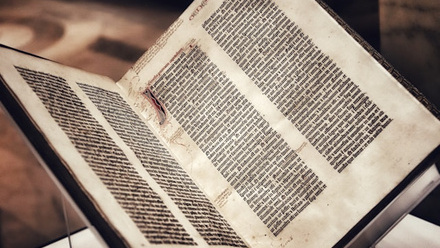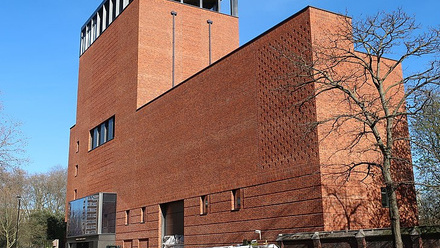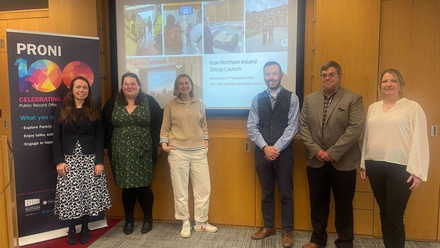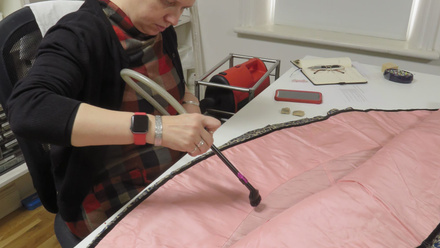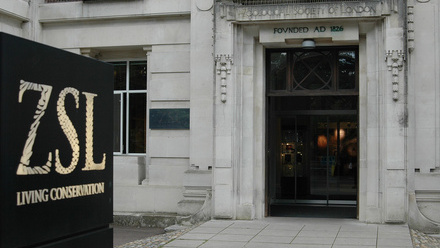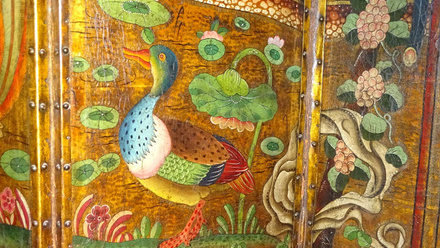In light of the Covid-19 situation, social distancing, welfare and hygiene concerns will be a key part of emergency response and emergency plans will need to be continually reviewed and updated. In addition there may be practical measures that can be implemented immediately to reduce the impact and likelihood of an incident.
Actions to be undertaken in the event of lockdown
In the event of another lockdown it could be useful to take specific practical actions immediately. The first step will be information gathering and recording your actions. Information about access, additional PPE equipment will be a necessity. Keeping a record of your actions will be important for insurance, review and evaluation at a later stage. It will be essential that there is a record of your actions to inform and protect your colleagues in the event that you are taken ill or that an emergency situation arises.
Find out if you have access to your site and what access you and your emergency response team would have to site in the event of an emergency. At this point you could check your security and access procedures.
If you cannot access your site, what measures could be carried out by staff in other departments or contractors who do have access to site?
- Do colleagues with site access have collections management skills/training?
- Can a list of checks be provided to them or can you instruct them remotely?
- Will you need to write more risk assessments and method statements or standard operating procedures for new tasks?
- Do colleagues have the correct materials and PPE?
- If a colleague is carrying out checks ensure they are recording/monitoring their work and procedures
- Can you contact contractors who have access to the site and ask for their assistance?
On site emergency preparation
Every institution will have its own on-site procedures that need to be carried out for emergency preparedness and these may be part of a more general Collections Care plan. Museums Development East Midlands has produced a Collections Management Checklist which is available on the Collections Trust website that can be adapted for emergency preparation.
Before going on to site it will be necessary to have the correct PPE and risk assessments required. Ensuring you can sanitise equipment and safely dispose of waste will be a priority. Existing risk assessments and method statements may need to be updated such as those for object movement or use of lifting equipment and you should be prepared to carry out dynamic risk assessments while working. If you are working alone you may wish to update your safe lone working procedures using a phone buddy or checking in system in addition to normal practice.
Below are some additional suggestions of actions that could be taken to reduce the risk to assets in an emergency.
- Checking salvage supplies are adequate, up-to-date and accessible; if the organisation is closed they could be left in galleries or next to vulnerable areas
- Removing, packing or covering vulnerable items. Could some items be packed e.g. small ceramics? Could large objects be covered with polythene or fire covers?
- Check known issues such as blocked gutters and leaks
- Check building maintenance and health and safety tasks are being carried out such as legionella testing in standing water systems
- Check priority or vulnerable objects, could they be protected or moved especially if the organisation is closed to visitors?
- Removing waste or any food sources for pests and checking fire hazards
Contacting your Salvage Team
Staying in touch with your salvage team, checking if they can respond in an emergency and what their needs are in terms of PPE and welfare is essential. You will need to gather information such as; do you have the correct PPE for your team, are they all in good health, where are they situated? For example if colleagues have to travel long distances is it practical for them to attend or could they advise remotely. Access to supplies of food and overnight accommodation is likely to be difficult during a period of lockdown so advising remotely may be the most low risk option.
Reminding yourself of your colleagues' skill sets will also be important, and can be included into a risk assessment or decision making process. In an emergency during a lockdown period you may want to call on the minimum number of people so it is important that those individuals have the most relevant skill sets for the situation.
If members of the salvage team cannot access the site for health or geographical reasons, additional volunteers may be required, these could be other staff members from other departments such as facilities, who are working on site already or salvage teams from neighbouring institutions. Consider if they require training that could be provided remotely, your Human Resources advisor could assist with this. This information can then be added to the emergency plan and risk assessment to help with decision making in the event of an emergency.
Adaptations to emergency plans/review
As mentioned previously gathering as much information to provide robust risk assessments, review of emergency plans and preparing salvage teams to work flexibly in line with government guidelines will be a good starting point for adapting an emergency plan.
Reviewing your emergency plan to check that the major workflows can still function may highlight areas that need to be changed or adapted. You may find it helpful to use a workflow map to test the current plan and review it with colleagues. You can then produce any additional risk management systems and responses. Continual review of the emergency plan and communication with colleagues will be key to producing appropriate and informed responses.
The review process might include finding out if there is a change in response from your local emergency services or contacts in other departments such as Human Resources, Media and Health and Safety. Again this will highlight additional processes required in this unprecedented situation. Gaining an understanding of whether they are still active, able to respond and what additional requirements they need from you will inform the risk assessment and allow you to make measured and appropriate adaptations.
Contacting any contractors you use to understand how they are operating could give a clearer picture of what would happen in an emergency and any restrictions or extra risks that may need to be managed. If contractors are not operating as usual can work be carried out by different contractors, could a different process be used or will work have to be slowed? Combining this with the workflow diagram may flag issues such as longer response time, lack of equipment such as freezers or space for salvage work.
For an adapted emergency plan to work effectively it will be vital to understand if your chain of command and decision making processes still functions during a Covid outbreak. Most emergency plans have a degree of flexibility to facilitate decision making in a fast paced environment, are these measures still sufficient? It may be helpful to use a workflow map to plan possible scenarios and ensure they are approved by relevant parties in advance so that it is clear who makes which major decisions, even if they cannot access the site.
Specific practical processes are likely to be impacted by the covid virus, such as object movement. Evaluating methods for moving objects, particularly those on priority lists might reduce the risks to collections and people, providing a more effective response. While many objects may be moved safely with social distancing there will be objects with more complex needs such as heavy or large objects which cannot. Decide if current methods are sufficient to facilitate low risk moves, for example could large objects be moved by colleagues with PPE or could the object be quarantined?
Consider whether your triage and salvage work areas are still accessible and sufficient. It is likely that much larger spaces will be required for working with social distancing. If more space is needed could local empty buildings be used, and what adaptations would they need to provide safe working areas? Alternatively could spaces be divided up and temporarily separated?
Maintaining hygiene in accordance with government guidelines will be central during a virus outbreak. Following models used by key workers may be useful here, there are guidelines on the Gov.uk website as well as guidelines on working in museums as they re-open after the pandemic on the Icon website. One possible example is implementing a one way system, which could be applied to salvage areas to limit contact. Another example could be use of hand gel as well as hand washing or modifying welfare facilities in response to concerns of Covid-19 passed on through contaminated water.
As in any emergency plan, health and safety will be the primary concern so designating specific roles to monitor social distancing, use of PPE, and fatigue will help to ensure colleagues work safely. Carrying out salvage work is a high stress activity which will be exacerbated by working during a pandemic. Ensuring that all team members are confident in their work and have their welfare needs met will not only reduce the mental and physical health risk to colleagues but will prevent colleagues’ judgement from being impaired and reduce risks to collections.
Having reviewed your emergency plan and the needs of your team you may well need to purchase additional PPE, waste disposal bags, cleaning materials, welfare supplies and monitor the distribution of supplies. It may be helpful to ask salvage team members if they can prepare their own emergency supplies food and water if providing this with hygiene restrictions is problematic. You may also need extra materials if you are having to adapt improvised work spaces for salvage and emergency work.
Cleaning surfaces and equipment is a large part of the salvage process during the Covid-19 outbreak and must be factored into each stage of an emergency/salvage plan. It may be useful to designate a cleaning manager role to ensure appropriate cleaning is carried out, monitored and recorded. Cleaning will need to be recorded to inform people of where contaminated material might be and reduce the risk of transmission.
Linked to surface cleaning is quarantining objects suspected to be contaminated, this would reduce the risk of surface damage from cleaning as well as limit colleague contact with contaminated material.
Keeping records of cleaning and collections care activities carried out each day will be essential, especially where activities are completed by several small teams who may never directly communicate but could be working in the same area. If records are maintained then it will be clear what tasks and safety measures must be undertaken. Finding the most hygienic method to communicate these records will be important; this could be carried out on worksheets left on site, whiteboards or circulated on mobile phones. Monitoring and recording work will be essential to reduce risks to people and collections as well as allowing for future evaluation of procedures.
Carrying out emergency and salvage work while following government guidelines will require adaptations to existing procedures and good communication of these changes. Reactive working is part of normal emergency planning, this should make it easier to adapt existing plans to manage new risks posed by the Covid-19 pandemic.
Accepting and preparing for change
Working in a rapidly changing environment can be very difficult for many people, however, most emergency incidents demand that colleagues work in this situation so many institutions and their salvage teams will be prepared for this to some degree.
Keep in contact with your salvage team, including contacts in Health and Safety, Media relation and Human Resources. Communicating changes to your team will be vital to ensure they remain engaged and confident in their response, especially colleagues who have been furloughed. Changes may include the number of people called to respond or people with specific skill sets who are called on. People may be asked to carry out work such as cleaning or monitoring social distance that are new roles and do not involve working directly with collections.
Keeping in contact regularly can also be a chance to update colleagues on changes in procedure and carry out training. This could be exercises to modify the emergency plan using a tool like the workflow map. Another useful task might be to ensure everyone is familiar with the priority list and access through the museum, as routes may have changed due to the restrictions from the Covid-19 outbreak. Preparing your teams for this might reduce stress in the event of an incident. There are likely to be big changes in the way the organisation responds to emergencies and unless everyone responds appropriately risk levels could increase.
In the current crisis changes to an emergency plan will have a wider impact on the organisation in terms of media management, human resources and wider risk management. There may well be questions around furloughed colleagues and volunteers on the team which impact the number of responders in the event of an incident. In terms of media it will be vital to consider how any emergency response will be shared with the press as there may well be increased press attention. Making sure that all relevant departments are briefed and ready to carry out new emergency responses could have a huge impact.
Carrying out emergency and salvage work during a covid outbreak may involve saying no, stopping or slowing work; for example working in smaller teams, stopping work to clean could all add extra time to a salvage operation. To justify these decisions tools such as the workflow map and risk assessments will help by identifying risks and priorities. Accepting and preparing for this may aid management of resources and people.
What can we learn?
The Covid-19 pandemic will act as a catalyst for learning and adaptation throughout the heritage sector including emergency response and salvage. Building on existing emergency response practices we can respond effectively to the crisis. Cooperation between museums and heritage organisations has demonstrated the resourcefulness and commitment of colleagues across the heritage sector. The pandemic has provided an opportunity to review and test emergency plans highlighting how important emergency plan review is. The Covid-19 crisis has demonstrated that it is impossible to prepare for all eventualities so the best response may be gathering and sharing information to facilitate rapid, measured and resourceful risk management. Existing communication within and between institutions creates salvage response teams who are informed and ready to work effectively in uncertain times. Emergency response is challenging in the current situation, however hopefully lessons learned from preparing for emergency response during lockdown can be applied to new working methods moving forward.
Summary
Refresh or renew your risk assessment with the latest information and government guidelines, adapt working practices such as object movement, consider introducing new roles such as cleaning manager
- Keep monitoring new information and update your risk assessments accordingly
- Record your actions
- Communication with contractors, other departments, institutions and your salvage team is essential, ensure this is maintained
- Find safe systems to communicate work systems and progress during an emergency response
- Check your decision making processes and key emergency responses are still functioning, using the flowchart may be helpful
- Check your salvage team is available and consider the individual's skill sets
- Will salvage teams need extra PPE, to provide their own food/drink
- In the event of another lockdown immediately carry out practical tasks to reduce risk/aid with emergency response such as pre-packing small objects
Article written by: Sophia Oelman and Sadie Wilson
Acknowledgements: The authors would like to thank: the Historic Royal Palaces Salvage Teams (led by Victoria Richards, Christopher Stevens, Jonathan Bridal and David Orr) for sharing their approaches for adapting collections salvage during the Covid-19 lockdown period and Claire Fry ACR.
Image: Creative Commons

